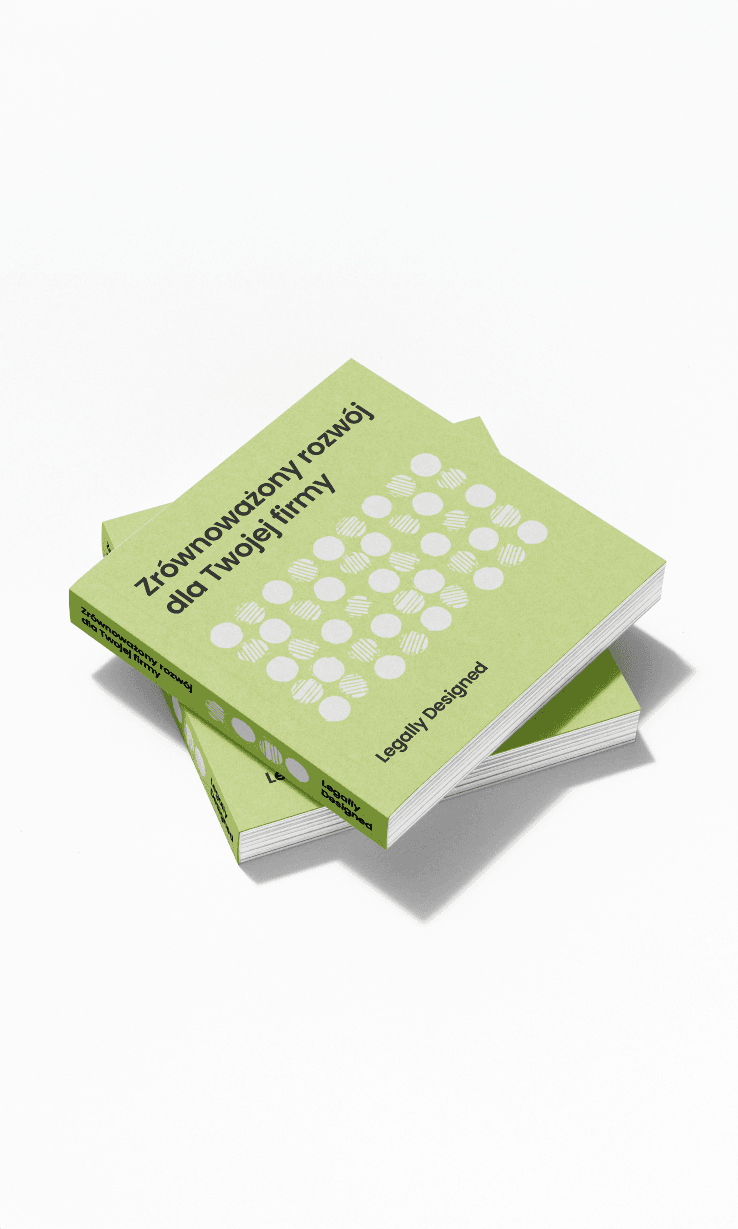
Legal design is a modern approach to creating documents that combines law, graphic design, and user-centered thinking.
Its goal is to simplify documents (including contracts), procedures, and legal processes in a way that is clear, intuitive, and easy to understand.
Legal design is a response to the need to democratize the law, making it more accessible to people regardless of their education, legal knowledge, or experience.

Get in touch with us to receive legal support from experienced professionals who will answer your questions

he growing number of legal regulations, along with their increasing complexity and level of sophistication, has naturally driven the need to seek solutions where the recipient of legal documents is placed at the center—while still maintaining all formal legal requirements.
The origins of the legal design concept are closely tied to the rising interest in the design thinking methodology. This approach focuses on user needs and on creating intuitive, effective solutions—from the user’s perspective.
This movement began to gain traction in the United States, with Stanford University playing a key role. At Stanford Legal Design Lab, research and projects were initiated that combined law, design thinking, and new technologies. This lab became a hub for experimentation and innovation aimed at improving access to law, enhancing its clarity, and tailoring legal services to meet users’ needs.
Today, this concept is evolving around the globe, including in Europe. One of the most well-known organizations supporting legal innovation is the Hague Institute for Innovation of Law, based in the Netherlands.
Documents—including contracts and procedures—are written in plain language, free from excessive legal jargon. A person signing a contract created with this approach does not feel like they’re agreeing to something they don’t understand.
Clear and simple language helps build trust between the parties and minimizes the risk of conflicts arising from misunderstandings. This approach also makes the experience of signing a contract less stressful for users.
All solutions within legal design are developed with the user in mind and from the user’s perspective. This means not only considering their needs and expectations but also acknowledging possible limitations.
Understanding the specific requirements and preferences of the user is key to designing documents that are not only legally compliant but also intuitive and easy to navigate. A user-centered approach significantly improves both the quality and effectiveness of legal documents.
Legal design uses icons, illustrations, symbols, and other visual tools to present complex information in a clear and understandable way. Documents created in this spirit are often colorful and visually engaging, allowing for easy distinction between different sections.
This visual approach helps draw attention to the most important elements and enables users to grasp key content more quickly.
Virtually everywhere!
Contracts, procedures, regulations – Traditionally created documents are often complex, written in inaccessible language, and visually dull. This makes them hard to read and absorb. Legal design enables the creation of clear, readable, and visually appealing documents. Applying this approach when designing and implementing procedures makes them easier to understand and follow in practice.
Legal information – Legal design can also be used to present legal information in a more user-friendly way. This is especially helpful during legal training sessions—but not only there. Informational obligations, such as the GDPR clause, can also be communicated through engaging visuals. The recipient receives a clear and simple message, which builds trust and improves cooperation.
The greatest advantage of this approach is the ability to communicate effectively with a broader audience, including those without specialist legal knowledge. Clear and transparent documents help clients and stakeholders feel more confident, which strengthens the credibility of a company or institution.
Understandable procedures reduce errors and the need for additional explanations, which leads to improved work quality and increased efficiency. This results in significant time and resource savings.
Implementing legal design also reflects a spirit of innovation and contributes to building a positive image. It demonstrates openness to new technologies and tools, which has a positive impact on the organization’s reputation.
Today, legal design is not just a new way of drafting legal documents or simplifying legal content—it’s a completely new approach to law. By adopting this mindset, procedures and documents become more accessible to their users, which fosters trust and boosts effectiveness.
Implementing legal design is an investment that benefits all parties: businesses, institutions, as well as lawyers and their clients.

Adriana Kidawa